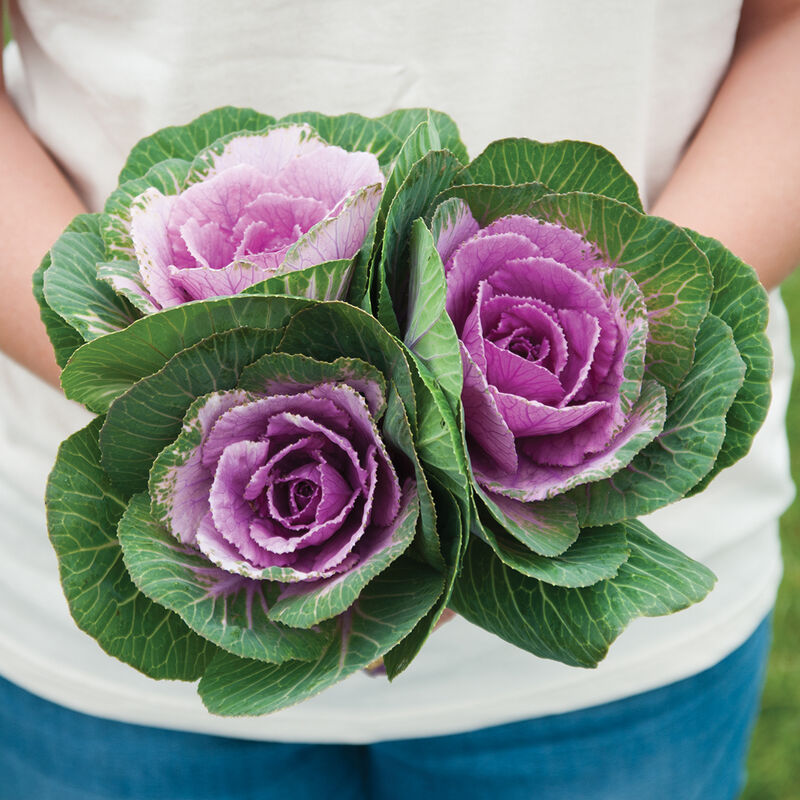Crane Pink (F1) Ornamental Kale Seed
Product ID:3649.113649
Crane Pink (F1) Ornamental Kale Seed
Product ID:3649.113649
Lovely rich color for autumn bouquets.
Extend the flower production season with ornamental kale. The Crane series is consistent, uniform, and provides a range of colors. Crane Pink has bright pink centers surrounded by green outer leaves. Also known as flowering kale and ornamental cabbage. Specs:
- This product does not ship to the following countries: United Arab Emirates, Austria, Australia, Barbados, Belgium, Bulgaria, Bermuda, Bahamas, Switzerland, Cyprus, Czech Republic, Germany, Denmark, Estonia, Spain, Finland, France, United Kingdom, Greece, Hong Kong, Croatia, Hungary, Ireland, Iceland, Italy, Japan, Republic of Korea, Kuwait, Cayman Islands, Lithuania, Luxembourg, Latvia, Malta, Netherlands, Norway, New Zealand, Oman, Poland, Portugal, Qatar, Romania, Saudi Arabia, Sweden, Singapore, Slovenia, Slovakia, San Marino, Thailand, Trinidad and Tobago, Taiwan, Ukraine.
DAYS TO GERMINATION:
10-14 days at 70-85°F (21-29°C)SOWING:
Transplant (recommended) - Sow 4-6 weeks before planting out. After germination, plants grow best under cooler conditions, 60-70°F (16-21°C) for 3-4 weeks. Plants begin to color once temperatures drop below 50°F (10°C). Direct seed - Sow about 3 months before expected fall/winter frost. When 10-12" tall, remove lower leaves. Repeat 3 or 4 times.LIGHT PREFERENCE:
Sun.PLANT HEIGHT:
24-36".PLANT SPACING:
4-6". Plants spaced more than 6" will produce heads that are too large for cut-flower use.HARDINESS ZONES:
Annual.HARVEST:
Kale should have a 6" head on a 24" stem with good coloring. Plants will begin to color once temperatures drop below 50°F.SOIL REQUIREMENTS:
Moist, well-drained soil. Discontinue fertilizing once plants begin to color.USES:
Long-lasting cut flower.SPECIAL INSTRUCTIONS: Once plants are about 10-12" tall, remove the lower leaves. Repeat 3 or 4 times as the plants grow taller. Provide horizontal netting to prevent the plants from falling over, as they become top heavy.SCIENTIFIC NAME:
Brassica oleraceaJohnny's is committed to your success, every step of the way.
We want you, our customer, to be 100% satisfied with all of our seeds, tools, and supplies.
If anything you purchase from us proves unsatisfactory, we will either replace the item or refund the purchase price.





